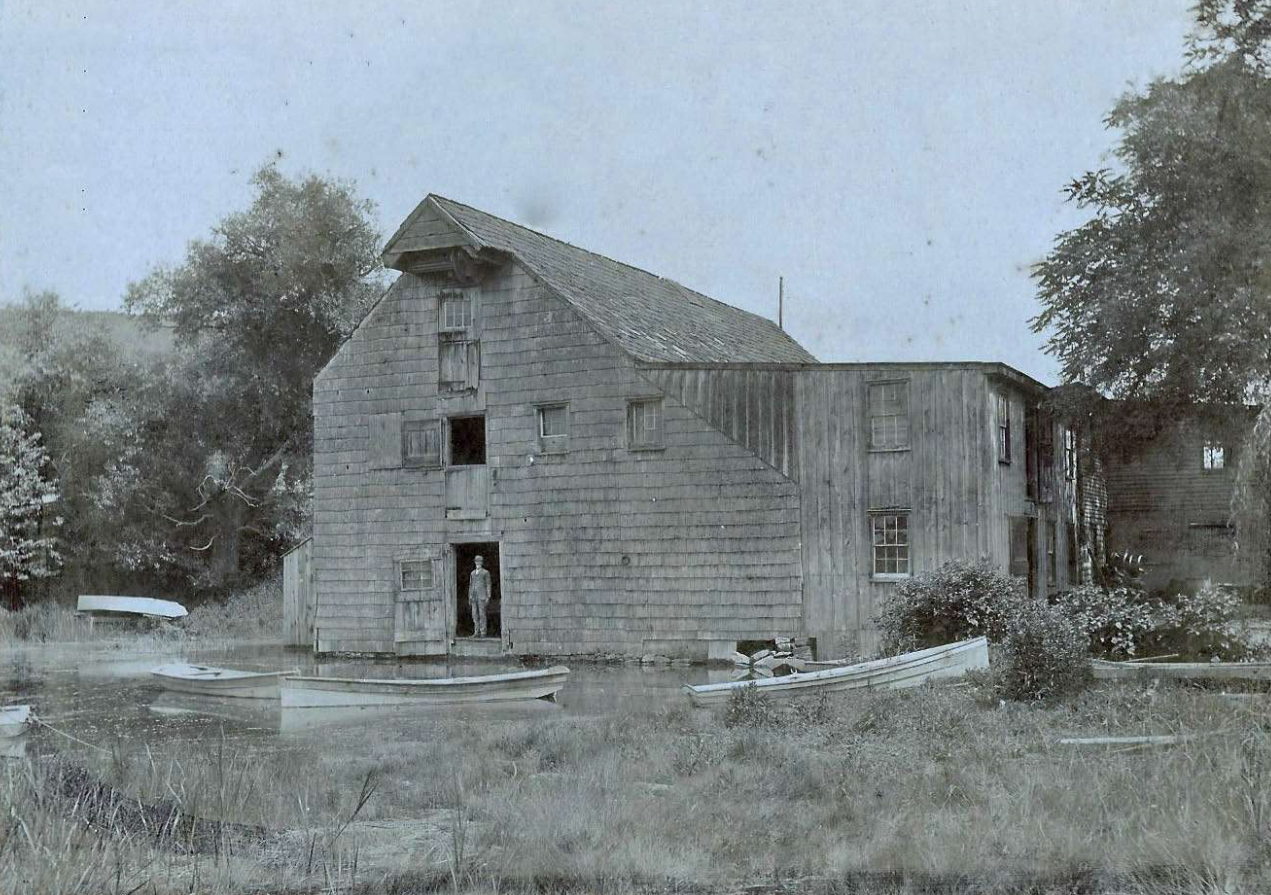Town of North Hempstead historian Howard Kroplick has photographic evidence that the efforts to renovate the Roslyn Grist Mill — which was built in the 1700s — have been going on for years.
“I have a photo from 1976, and there’s a sign in front saying that it will be restored soon,” he said.
Now, after decades of false starts, money has come through for much-needed renovation work to be done.
Nassau County Legislator Delia DeRiggi-Whitton announced this week that the county approved $440,000 to help begin the project.
“I am delighted — and relieved — that Nassau County will be providing the long-awaited funding to kickstart the restoration of a historic treasure in the heart of Roslyn,” she said in a statement. “I am looking forward to the day when the Roslyn Grist Mill is once again open for visitors and bringing Long Island’s rich colonial history alive.”
Kroplick said the county funds will be added to a fund that includes $500,000 from the state and about $500,000 from a local historic trust.
The combined $1.4 million will help to cover the expensive first phase of the renovation that will stabilize the structure. The Roslyn Landmark Society will be leading the restoration efforts.
According to Kroplick’s research, a grist mill has operated on the site since the 1700s.
The current structure, located on Old Northern Boulevard across from Roslyn Pond, was built sometime between 1715 and 1741 by Jeremiah Williams. It is a rare example of a Dutch-framed watermill built for industrial use.
The grist mill was mentioned by President George Washington in a 1790 diary entry when he visited the mill’s owner at the time, Hendrick Onderdonk.
Over the ensuing centuries, the structure changed hands several times until it became a tea house in 1920. The grist mill served that purpose for much of the ensuing 50 years until it was abandoned in 1974. The building has sat vacant since then.
In 1986, the grist mill was added to the National Register of Historic Places.
Kroplick said the restoration of the Roslyn Grist Mill has long been a priority for local preservationists given its long history.
But high costs meant that little work has been done on the building over the last 40 years. He said some work was done in the 1990s “so that it wouldn’t fall in on itself,” but even that proved insufficient.
In 2015, the Society for the Preservation of Long Island Antiquities declared the site one of Long Island’s most endangered historic sites.
With the additional $440,000 from the county — $250,000 derived from the 2006 Environmental Open Space Bond Act and $190,000 as from Nassau’s capital funds program — work can begin on phase one of the rehabilitation.
The first phase would include further stabilization of the structure, restoration of the timber frames and raising the grist mill up to street level.
Kroplick said he would like to lay a new foundation for the building when the structure is raised but was unsure if there would be enough money left over to do that on top of everything else.
“If there’s enough money will we do it, and if not we will aggressively pursue more money because we should be [adding a new foundation],” he said.
Kroplick said a contractor had been signed this week to begin phase one and said that a groundbreaking would likely take place this fall. He estimated that the first phase would take no more than two years to complete and would likely be done in a year and a half.
Once the first phase was completed, the focus would then turn to restoring the inside of the structure to make it an educational tourist attraction.
“It’s going to be a long process, so we’ve just got to get it going, get some momentum behind it,” Kroplick said.
Reach reporter Luke Torrance by email at ltorrance@theislandnow.com, by phone at 516-307-1045, ext. 214, or follow him on Twitter @LukeATorrance.



